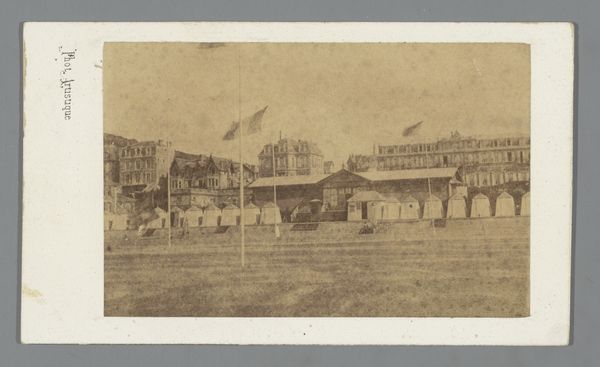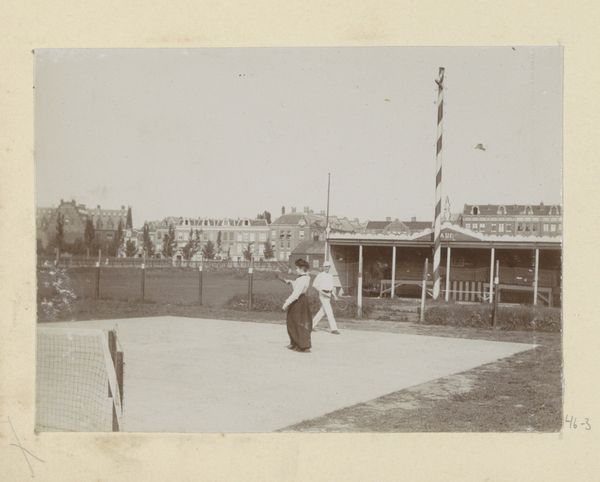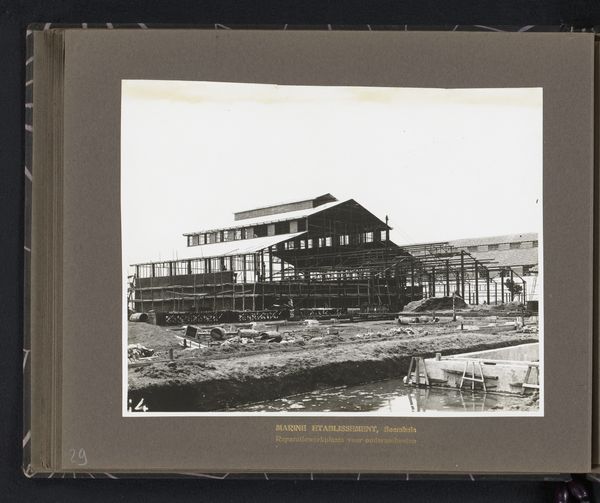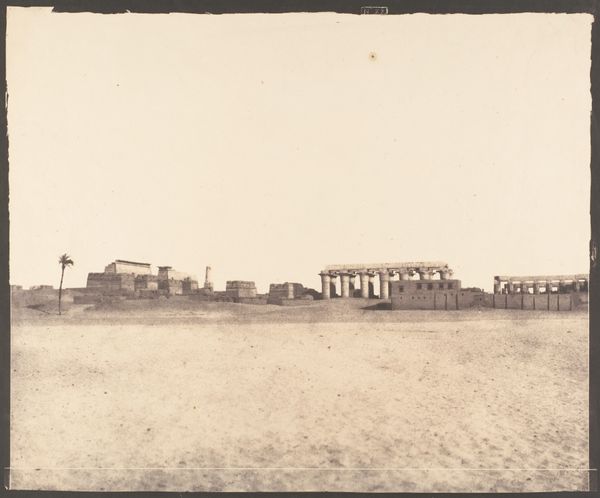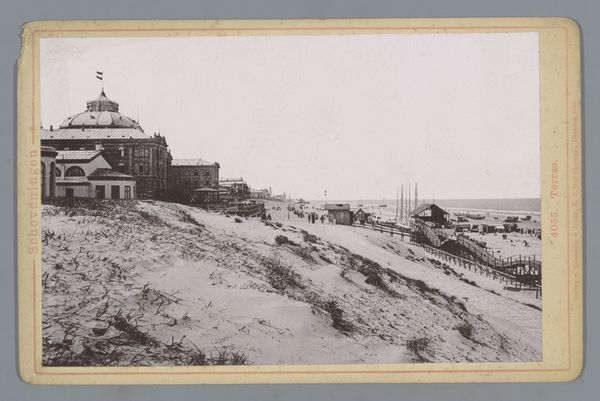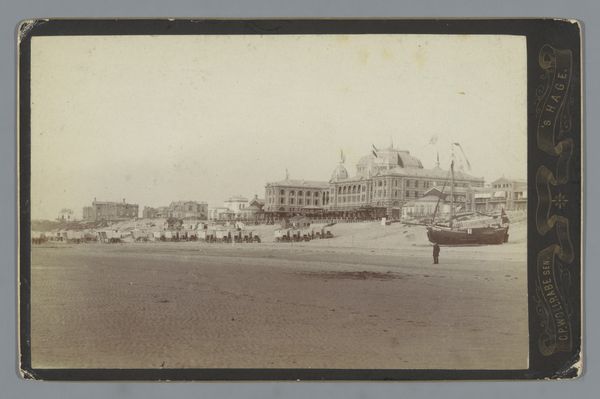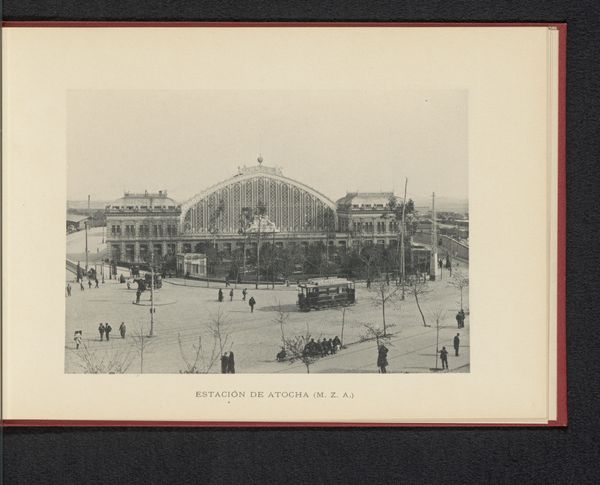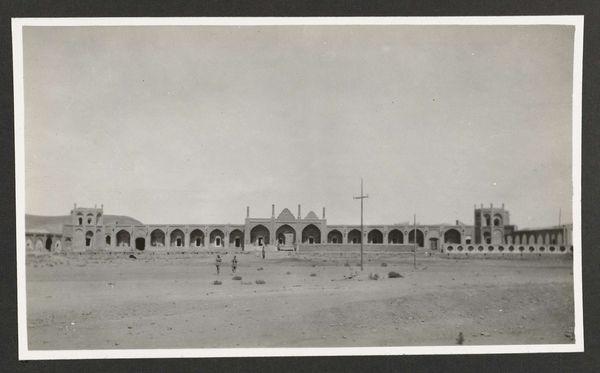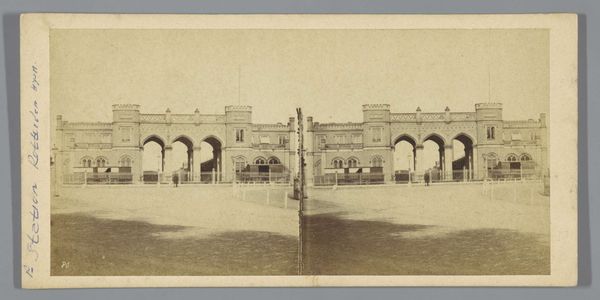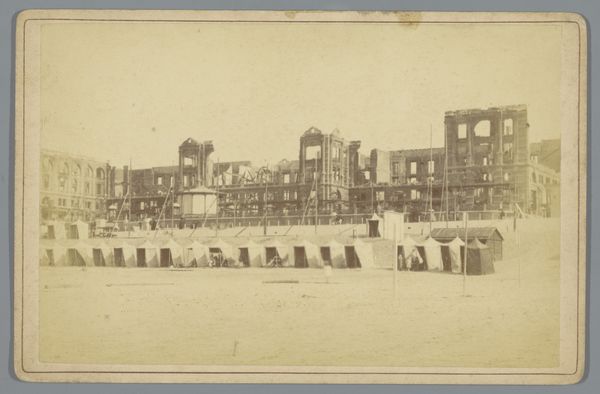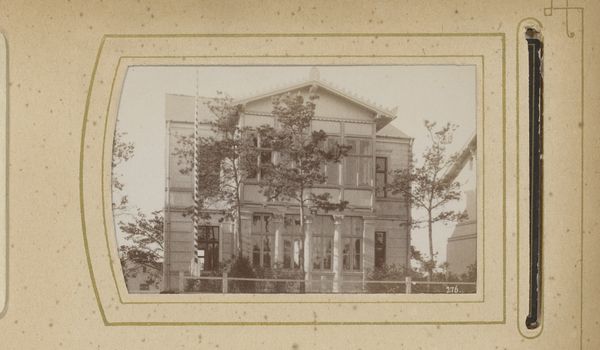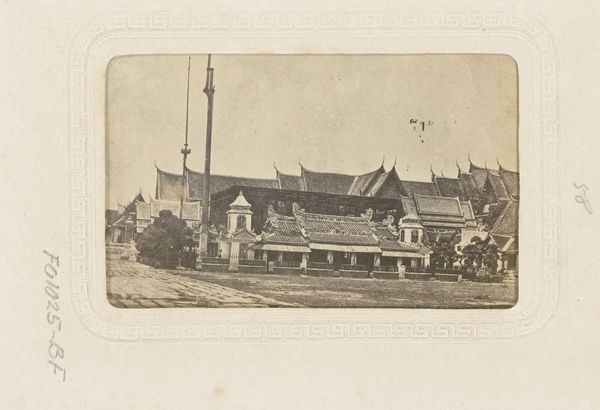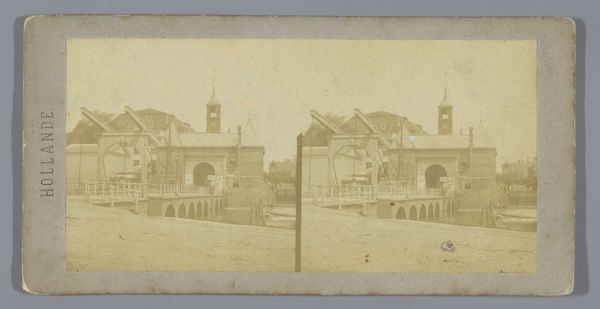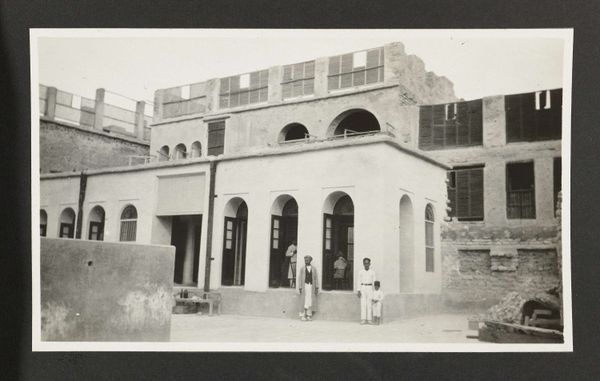
Dimensions: height 88 mm, width 136 mm
Copyright: Rijks Museum: Open Domain
Curator: This gelatin silver print, titled "Ruïnes aan het Hofplein te Rotterdam," was taken by J. Nolte sometime between 1940 and 1945. It’s an incredibly stark depiction of the war’s impact on Rotterdam. Editor: Stark is right. The scene seems devoid of color, life... almost ghostly, emphasizing devastation as a central visual and emotional symbol. The exposed building frames and jagged debris really drive that home. Curator: The image offers a haunting historical record. Following the bombing of Rotterdam in May 1940, a large portion of the city was reduced to rubble. This photo isn't just a document of urban destruction, but it serves as a reflection on the socio-political dimensions of wartime photography. Editor: Those arched facades in the center almost look like skeletal remains. It makes me think of architectural motifs of strength and civic pride turned into emblems of vulnerability and loss. Is there any specific meaning attributed to that building's structure? Curator: I believe it's a commercial building, now stripped of its intended purpose, a visible wound inflicted by the war. Nolte’s choice to frame the ruined architecture against a backdrop of sky evokes a feeling of exposed vulnerability, something commonly observed across Europe’s urban landscape during the period. Editor: And in its raw depiction, devoid of artifice, it transcends its immediate context, resonating as a symbol of broader human resilience amidst overwhelming destruction. It forces one to question, what new societal structures rise out of this? Curator: Absolutely. What we see here is not just destruction, but also the start of reimagining, both the city’s and Europe's. I see this photograph as vital testimony. Editor: Looking at the photo again I feel it almost breathes with a subdued and resolute tone.
Comments
No comments
Be the first to comment and join the conversation on the ultimate creative platform.
